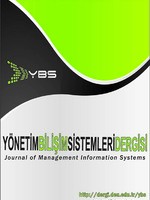YAZILIM TEST SÜRECİNDE DURUM RAPORLAMASINA GENEL BAKIŞ VE YAKLAŞIMLAR
Yazılım Testi, Yazılım Test Durum Raporlaması, Yazılım Test Hata Raporlaması
AN OVERVIEW AND APPROACHES TO STATUS REPORTING IN THE SOFTWARE TEST PROCESS
___
- Ammann, P., ve Offutt, J. (2016). Introduction to software testing. Cambridge University Press.
- Black, R. (2002). Managing the Testing Process: Practical Tools and Techniques for Managing Hardware and Software Testing. USA: Wiley Publishing, Inc.
- Bourque, P. ve Fairley, R.E. (2014). Guide to the Software Engineering Body of Knowledge (SWEBOK (R)): Version 3.0. IEEE Computer Society Press.
- Calleam Consulting Ltd. (2008). “Case Study – Denver International Airport Baggage Handling System – An illustration of ineffectual decision making”. https://www5.in.tum.de/persons/huckle/DIABaggage.pdf, (30.04.2018).
- Graham, D., Van Veenendaal, E. ve Evans, I. (2008). Foundations of software testing: ISTQB certification. Cengage Learning EMEA.
- Johnson, P. (2012). Mariner 1's $135 Million Software Bug. https://www.itwo-rld.com/article/2717299/mariner-1-s--135-million-software-bug.html, (06.05.2018)
- Jones, C. (2008). Applied Software Measurement: Global Analysis of Productivity and Quality. McGraw-Hill Education Group.
- Lazic, L. ve Mastorakis, N. (2008). Cost effective software test metrics. WSEAS Transactions on Computers, 7(6): 599-619.
- Lewis, W. E. (2017). Software testing and continuous quality improvement. Auerbach publications.
- Naik, K. ve Tripathy, P. (2008). Software Testing and Quality Assurance: Theory and Practice. USA: John Wiley & Sons, Inc.
- Patton, R. (2006). Software Testing. India: Pearson Education.
- Rational Software Corporation (2001). Test Evaluation Summary for the Architectural Prototype. https://sceweb.uhcl.edu/helm/RUP_course_example/courseregistrationproject/artifacts/test/results/test_report_arch.htm, (29.04.2019).
- Software Testing Fundementals (bt.). Defect Severity. http://softwaretestingfundamentals.com/defect-severity/, (18.05.2018).
- ISSN: 2630-550X
- Başlangıç: 2015
- Yayıncı: Vahap TECİM
INNOVATION IN THE GOVERNANCE PARADIGM FROM IT-GOVERNANCE TO GOOD ENOUGH GOVERNANCE
Ahmet EFE, Türksel KAYA BENSGHİR
YAZILIM TEST SÜRECİNDE DURUM RAPORLAMASINA GENEL BAKIŞ VE YAKLAŞIMLAR
Buse USLU, Tamer EREN, Şeyda GÜR
Üniversite Öğrencilerinin Sosyal Medya Kullanım Tercihlerinin İncelenmesi
